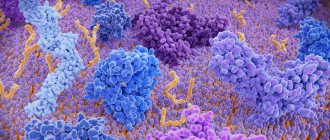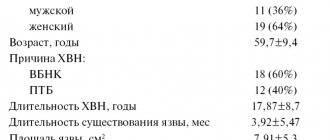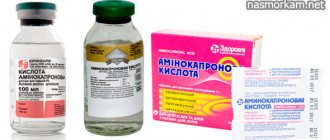Indications for use
The drug for intravenous administration is prescribed for the following conditions:
- septic condition;
- inflammatory and purulent processes in the membrane of the brain.
Indications for intracavitary use:
- peritonitis;
- cystitis;
- inflammatory and purulent processes in the gallbladder.
The medicine in the form of an intracavitary solution can also be used to prevent the occurrence of various infectious diseases.
Indications for local use:
- burns, wounds;
- deep abscesses;
- infectious lesion of the skin.
Analogs
More modern and safer analogues of Dioxidin for children in the nose are widely used by pediatricians. When treating rhinitis and sinusitis in children, the following is used:
- Isofra is a nasal spray with bactericidal properties, indicated for children from birth. It has a bottle convenient for irrigating the nasal mucosa. Apply three times a day for no longer than 10 days;
- Polydexa is a combined antimicrobial, vasoconstrictor, anti-inflammatory nasal spray. Children from 2-3 years old receive one injection into each nostril three times a day. Treatment lasts no more than 10 days;
- Sinuforte is a herbal preparation made from cyclamen tubers for children from 5 years of age. A solution is indicated for the complex treatment of purulent sinusitis. Combine with antibiotics or use as monotherapy, spraying the product intranasally once a day. Duration of therapy is 6-12 days.
Dioxidin has an impressive list of safe and effective analogues approved for children.
The choice of antibacterial treatment plan for otitis, rhinitis, sinusitis, and adenoids is based on the results of an analysis of the sensitivity of pathogenic microflora to antibiotics.
Contraindications and adverse reactions
You should stop taking the drug in the following cases:
- increased susceptibility to constituent components;
- period of bearing a child;
- during breastfeeding;
- childhood.
Can be used with extreme caution in chronic renal failure.
Possible side effects include:
- chills;
- headaches;
- nausea, vomiting, upset stomach;
- allergy.
Pharmacological properties
Pharmacodynamics.
dioxidin is a broad-spectrum antibacterial drug. effective against infections caused by Proteus vulgaris, Pseudomonas aeruginosa, Friedlander's bacillus, Escherichia coli and dysentery bacilli, Salmonella, staphylococci, streptococci, pathogenic anaerobes, including causative agents of gas gangrene. active against bacterial strains resistant to antibiotics, sulfonamides, nitrofurans and other drugs. Pharmacokinetics. When applied topically, dioxidin is partially absorbed and does not have a local irritating effect. Not metabolized. Does not cumulate. Excreted by the kidneys.
How to use Dioxidin for a runny nose
The product is not sold in the form of nasal drops. Before instillation into the nose, you need to dilute the contents of the ampoule with a hypertonic solution. For a runny nose, you can use the medicine 3 times a day, 2 drops in each nostril. During instillation, the head should be tilted back so that the product passes as far as possible into the nasal passages.
From the moment of opening, the ampoule is suitable for use within 24 hours. The duration of the therapeutic course should not exceed 7 days. If drops are used by children, it is better to shorten the course to 3-4 days.
To improve the effect, it is worth additionally resorting to traditional healing methods.
For inhalation with a nebulizer
Inhalations of Dioxidin in children are carried out in the treatment of the throat. Dilute the drug to 0.1/0.2% concentration. Fill the nebulizer with 3 ml of solution.
The procedure time is no more than 3 minutes. Do inhalations with an antibacterial agent in the morning and evening, continuing treatment for up to 3-5 days.
Dioxidin inhalations are used with great caution due to the toxic effects on the children's body. Extend the course of inhaling Dioxidin vapors as prescribed by a doctor. Repeating antibacterial inhalations is allowed only after a month.
How to use Dioxidin for sinusitis
Medicine in the form of ampoules is often used for sinusitis in children and adults. The solution is used in the form of drops or inhalations. You need to drip 1-2 drops into each nostril twice a day.
If the condition is advanced, then you can prepare a more complex solution, which will contain dioxidine and hydrocortisone. They can be used 1 drop in each passage no more than 5 times a day. The prescription for such drops is prescribed by a specialist. You can buy it at the pharmacy or prepare it yourself.
What is the medicine in?
Pharmaceutical companies produce Dioxidin in two forms:
- In the form of a solution used for nasal instillation. It is also used externally and intravenously. It is available in two concentrations: 1% and 0.5%. If a child or adult suffers from sinusitis or sinusitis, then only 0.5% Dioxidin solution is instilled into the nose. A 1% solution is diluted with saline or used in the treatment of otitis media. When treating serious diseases caused by bacteria, 0.5% Dioxidin is injected into a vein. The liquid is available in ampoules of 5 and 10 milliliters. It is greenish-yellowish in color and odorless. One package contains from five to 10 ampoules;
- Ointment applied externally, with a 5% concentration of the active ingredient. The color of the substance is greenish-yellowish. The ointment is produced in tubes or jars of 30 or 100 grams.
How to use Dioxidin as a mouth rinse
The component of the medicine effectively copes with the infection, cleansing the affected area and accelerating the healing process of the mucous membrane.
Gargle and mouth should be used for sore throat, tonsillitis, pharyngitis, when other medications do not bring the desired result. Take a little liquid into your mouth, throw your head back and gargle for 15-20 seconds. Then spit out the contents. The procedure can be performed up to 3 times a day.
The duration of the therapeutic course is 5 days.
Precautionary measures
Dioxidin can cure all forms of bacterial rhinitis and otitis in children. In fact, this is a universal medicine that can be used only in extreme cases when other drugs are powerless.
Since a synthetic antibiotic can cause side effects, a test must be carried out before using it. The child is instilled with 1 drop of the drug into the nose or ear and his condition is monitored for 3-6 hours. If the medicine is well tolerated, treatment can be continued.
Some parents prefer not to drip children's Dioxidin onto the mucous membranes of the nose when they have a runny nose, but rather treat them with a cotton swab soaked in the medicine. However, this should never be done, since it can damage the villi and mucous membranes of the nasal cavity. Also, you should not rinse your nose with Dioxidin solution, as this can cause an overdose. The medicine can enter the Eustachian tube or gastrointestinal tract through the nasal passages.
The antibiotic is very toxic, so it is important to strictly observe its storage conditions. The medicine should be kept out of the reach of children. The opened ampoule should be stored in the dark and cold. If the expiration date has expired, the medication must be disposed of.
- Dioxidin in the nose for an adult: how to use it at home for an adult
Is it possible to give Dioxidin to children?
The instructions for the drug say that it should not be given to persons under 18 years of age. This is due to the fact that the active component can have a toxic effect on an incompletely formed organism.
But there are still exceptions when a pediatrician can prescribe Dioxidin to a child. In this case, the expected benefit should be many times higher than the possible threat. When prescribed to children, constant medical supervision is required.
The medicine can be prescribed for ENT diseases, in particular rhinitis and sinusitis. Also, the drug in the form of an ointment and solution can be used to treat affected areas of the skin.
Can I put it in my nose?
Dioxidine is used in the nose of a child from the age of 18. The official instructions for use of the substance hydroxymethylquinoxaline dioxide clearly inform children about the age of using the drug in the nose. Soviet pediatrics used Dioxidin in children's noses and ears. Over time, evidence has accumulated on the negative consequences of local antiseptic treatment:
- allergies – redness, itching, peeling;
- thinning and degeneration of the mucosa;
- increased photosensitivity to the sun;
- convulsive muscle contraction;
- headache.
The reason for prescribing Dioxidin nasal drops for children is a persistent infection (Pseudomonas aeruginosa, streptococci, staphylococci and other microorganisms), which cannot be overcome with other antimicrobial drugs.
According to instructions for use
Instructions for use of Dioxidin for children warn against unreasonable use of the product. Regarding use in the nose, the instructions do not contain direct recommendations.
The decision whether Dioxidin can be dripped into the nose of children is made by the doctor, based on the specific medical history
. The famous pediatrician Komarovsky allows the use of the drops in question from the age of 12.
In pediatric practice
Pediatricians prescribe Dioxidin to a child in the following cases:
- purulent inflammation of the nasal cavity and paranasal sinuses;
- diffuse or limited purulent lesions of the nasal mucosa and nasal septum;
- chronic inflammation of the tonsils;
- purulent process of the pharynx and trachea;
- external otitis while maintaining the integrity of the eardrum;
- after surgical interventions on the upper respiratory tract and ears to prevent postoperative infection.
The use of Dioxidin in children's nose suppresses the development of antibiotic-resistant strains of microbes. According to studies outside a living organism, the antimicrobial activity of the drug extends to mutant strains of Klebsiella, Escherichia coli, streptococci, staphylococci resistant to fluoroquinolone, rifampicin, ciprofloxacin.
Similar drugs:
- Augmentin Oral tablets
- Tea tree DN Ointment for external use
- Augmentin Powder for suspension for oral administration
- Bactrim Oral suspension
- Pancef Oral tablets
- Nifuroxazide (Nifuroxazide) Oral tablets
- Cifran OD Oral tablets
- Pancef Granules for the preparation of suspension for oral administration
- Augmentin ES Powder for oral solution
- Benzylpenicillin Powder for injection solution
** The Drug Directory is intended for informational purposes only. For more complete information, please refer to the manufacturer's instructions. Do not self-medicate; Before starting to use the drug Dioxidin, you should consult a doctor. EUROLAB is not responsible for the consequences caused by the use of information posted on the portal. Any information on the site does not replace medical advice and cannot serve as a guarantee of the positive effect of the drug.
Are you interested in the drug Dioxidin? Do you want to know more detailed information or do you need a doctor's examination? Or do you need an inspection? You can make an appointment with a doctor - the Euro lab is always at your service! The best doctors will examine you, advise you, provide the necessary assistance and make a diagnosis. You can also call a doctor at home . Euro lab clinic is open for you around the clock.
** Attention! The information presented in this medication guide is intended for medical professionals and should not be used as a basis for self-medication. The description of the drug Dioxidin is provided for informational purposes and is not intended for prescribing treatment without the participation of a doctor. Patients need to consult a specialist!
If you are interested in any other drugs and medications, their descriptions and instructions for use, information about the composition and form of release, indications for use and side effects, methods of use, prices and reviews of drugs, or you have any other questions and suggestions - write to us, we will definitely try to help you.
special instructions
Dioxidin is used only under close medical supervision. Uncontrolled use of dioxidine and dosage forms that contain it is not allowed.
If adverse reactions occur, you should reduce the dose, prescribe antihistamines, and, if necessary, stop using Dioxidin.
Use during pregnancy and lactation. The drug is contraindicated for use during pregnancy and breastfeeding.
Children. The drug is not used to treat children.
The ability to influence reaction speed when driving vehicles or working with other mechanisms. There is no data on the negative impact of the drug on the ability to drive vehicles or operate other machinery.
Storage conditions
In a place protected from light at a temperature of 18–25 °C. If dioxidine crystals form in the ampoules during storage (at a temperature of 15 °C), they are dissolved by heating the ampoules in a boiling water bath while shaking until the crystals are completely dissolved (transparent solution). If, when cooled to (37±1) °C, the crystals do not fall out again, the drug is suitable for use.
Product description certified by the manufacturer Farmak
.
Verified by
Likar Turumkulova Irina
Note!
Description of the drug Dioxidin solution 1% amp. 10ml No. 10 on this page is a simplified author’s version of the apteka911 website, created on the basis of the instructions for use.
Before purchasing or using the drug, you should consult your doctor and read the manufacturer's original instructions (attached to each package of the drug). Information about the drug is provided for informational purposes only and should not be used as a guide to self-medication. Only a doctor can decide to prescribe the drug, as well as determine the dose and methods of its use.






